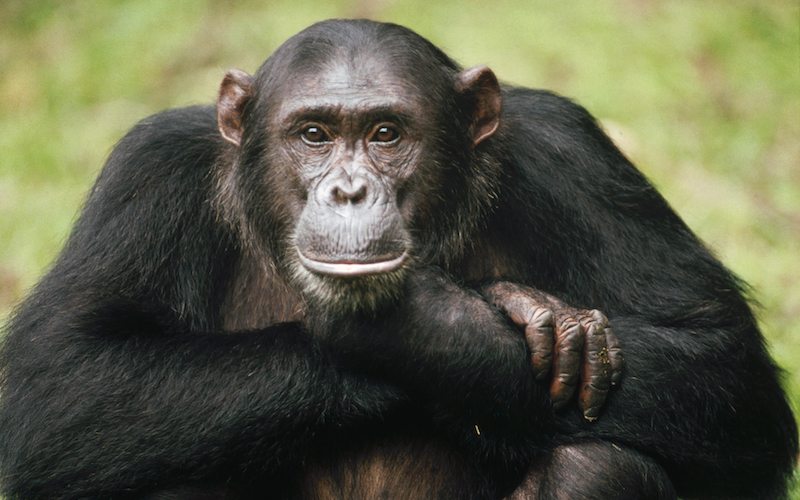Chimps
Episode #1 of the course “The Smartest Animals on Earth“
When you want to know more about something, explore it. Seems simple, right? However, this is the result of a complex series of decisions. How an animal learns tells researchers a great deal about the animal’s problem-solving skills, which is a measure of intelligence. No animal shows a wider variety of problem-solving skills than chimpanzees. They are social animals who have learned to use their brains.
Although chimp brains are approximately ⅓ the size of human brains, they have one of the highest levels of intelligence in the animal kingdom. What sets chimps apart from other animals is their ability to problem-solve, their self-awareness, and their decision-making skills. Like humans, DNA is responsible for half of a chimp’s intelligence. The other 50% is determined by the chimp’s ability to learn from its environment.
Chimps are excellent verbal communicators with other chimps. They can read the facial expressions of both chimps and humans, they understand emotion, and they even seem to grieve at deaths. Chimps have also been taught sign language and simple verbal commands both in captivity and the wild. All chimps demonstrate an ability to utilize teamwork and tools to gather food and protect their territory, and those in captivity have been taught to utilize more advanced tools to solve advanced problems.
For example, chimps in the wild will combine two sticks that are too short to reach an object alone and will reach the object with the longer tool. A chimp in captivity was looking at his teeth in a mirror, realized the reflection was him, began examining his teeth, and then retrieved a flashlight for a better look.
Share with friends

